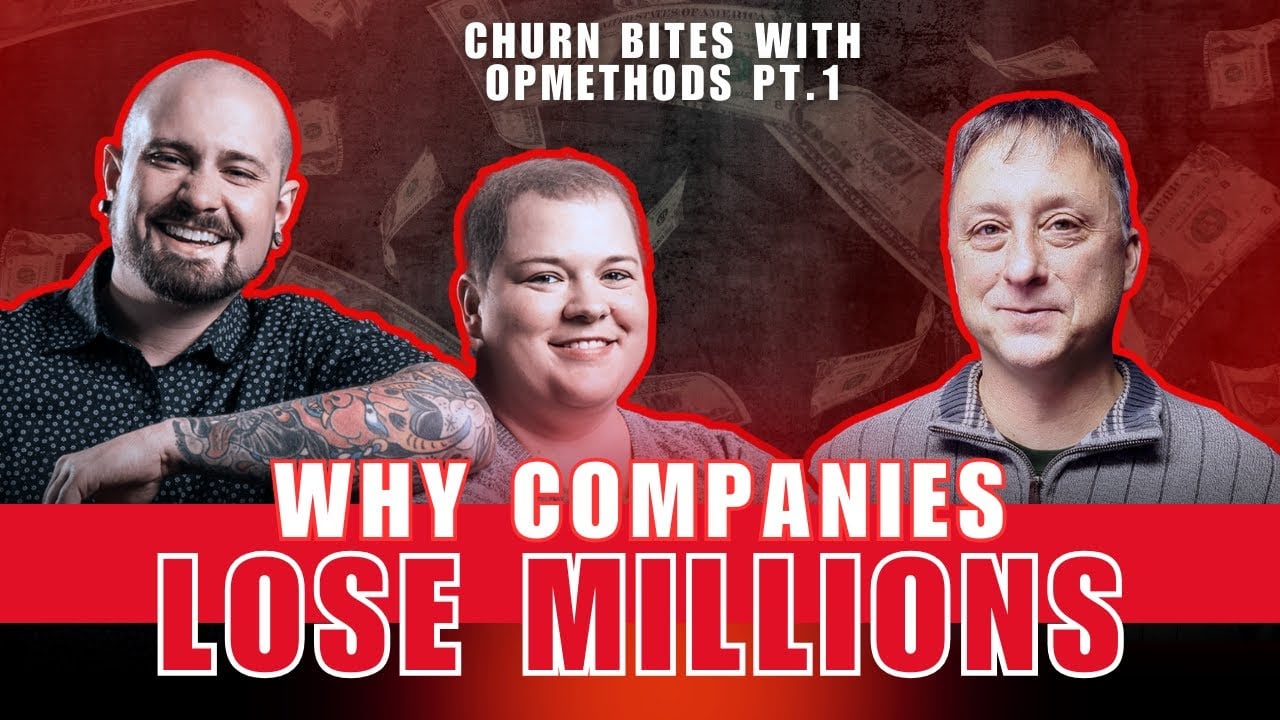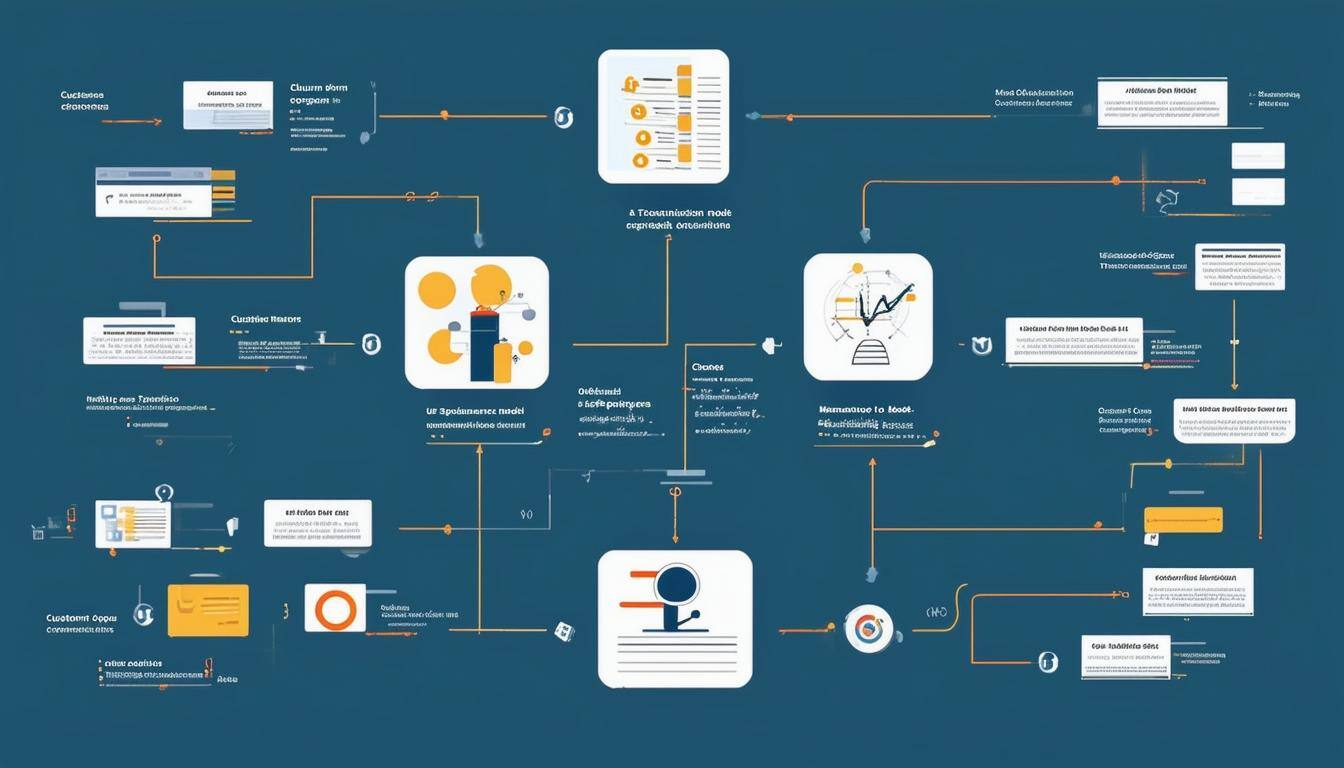How to Build a SaaS Churn Prediction Model for Customer Churn Analysis
Understanding your customers is a lot like being the captain of a ship—you need to keep everyone on board if you want to sail smoothly. One of the...
7 min read
 Dan Wilson
:
Feb 6, 2025 3:40:15 PM
Dan Wilson
:
Feb 6, 2025 3:40:15 PM

Picture this: You're leading a thriving SaaS company. You’re securing deals, gaining traction, and then—bam!—your customers start vanishing like socks in a laundry cycle. Leadership calls a meeting. Someone from sales says, “They left because of budget.” Customer success shrugs. “They seemed happy last month.” Support chimes in, “Maybe a bug? But they never told us.”
No one ACTUALLY knows why customers are leaving.
This is the churn crisis that plagues growing companies. Without a system to track why customers churn, businesses are left guessing. And guessing doesn’t pay the bills.
By know you know the economy is turning downward, putting budgetary pressure on acquisition-focused growth. To make numbers, companies now lean more on renewal rates and churn reduction. They need understand their business in a way they just haven't before.
That’s where Op Methods steps in.
On Churn Bites Episode 3, we discussed this very issue with Deb and Eric, founders of Op Methods. They’ve seen too many companies struggle with disconnected data, misaligned teams, and a lack of insight into customer retention. That’s why Op Methods exists—to transform scattered customer interactions into a cohesive revenue engine. By integrating CRM, marketing automation, and customer success tools, they help businesses move from reactive to proactive retention strategies. Their approach ensures no churn signal goes unnoticed, giving companies the clarity they need to grow with confidence.
It’s a familiar problem.
Many companies know churn is an issue but can't really identify its root causes. Too often, customer retention only becomes a priority when churn rates spike. Of course, by then it’s already too late to save some of those customers. It’s like waiting until your car breaks down on the highway to check the gas gauge—except instead of running out of fuel, businesses are losing customers they might have retained with the right insights and strategies.
Here’s what Op Methods discovered about why SaaS companies struggle with churn analysis and how it hurts retention rates:
Companies don't have solid data, just anecdotal reasons (“budget,” “wrong fit,” “bad vibes?”). This means, leadership can’t answer, “Why did we lose X million dollars this year?” Most companies think they know why customers leave, but when it’s time to present hard data, they realize they’ve got… nothing.
Meanwhile, leadership stares at declining revenue graphs like detectives at a crime scene with no clues. Without churn analysis, companies are left making expensive guesses and usually the highest paid person wins.
Without a solid system, there is no standardized process for tracking why customers leave. Thus, sales, support, and customer success teams don’t share churn insights. Imagine running a doctor's office where no one tracks why patients cancel their appointments. Did they recover? Did they find a better doctor? Did they get tired of the waiting room magazines?
That’s how many SaaS companies treat churn. They know customers left, but they didn’t collect any structured data to understand why. Without a formal churn tracking system, companies rely on vague assumptions, making churn prevention impossible.
In this condition they only investigate churn after it happens, not before which means renewals happen last-minute, with little chance to change customer decisions. See, most businesses operate like firefighters without smoke detectors, they notice churn once the flames are already burning. By the time a renewal is up, the customer has already checked out. They’ve been quietly disengaging for months while nobody noticed. A last-minute renewal call isn’t going to fix that. You can't patch a sinking ship with duct tape.
Companies need early churn signals and automated engagement strategies to address customer concerns before they become deal-breakers.
In this case, sales, support, and CS all hold pieces of the churn puzzle but never put them together. Then, the CRMs lack integrated churn data, making it hard to see patterns. Ever played a murder mystery game where everyone has different clues, but no one is allowed to share them? That’s how many companies track churn.
Without a centralized churn tracking system, each department operates in isolation, leading to missed warning signs and avoidable revenue loss.
Churn prevention is tough when every department defines risk differently. What does "at-risk" even mean? No one agrees. Some call it lack of engagement, others call it a pricing objection. No one tracks it consistently.
If everyone tracks different churn signals, the data becomes useless. Companies need standardized churn definitions to measure retention risk accurately and take action consistently.
Imagine getting a weather forecast that only tells you it rained yesterday? If you only find out a customer is unhappy when they submit their cancellation request, you’ve already lost them. Without real-time churn tracking, businesses are always reacting instead of preventing. By the time leadership gets the quarterly churn report, the damage is already done.
The result? A never-ending churn mystery. Companies need automated churn tracking and early warning systems (like Churn Assassin) to identify at-risk accounts before it’s too late.
Op Methods doesn't come in with magic wands (though that would be more fun). Instead, they build a churn analysis system that helps SaaS companies understand customer retention trends, track the right metrics, and take action before churn happens. Because, let’s be honest, waiting until a customer is halfway out the door is like trying to win them back with an “I’m sorry” text at 2 AM.
Here’s how Op Methods turned SaaS churn chaos into predictable retention strategies:
If your CRM isn’t tracking churn-related data, it’s basically an expensive digital junk drawer. Companies often store renewal dates, customer success check-ins, and support interactions in different places, leaving their churn rate looking like a cryptic puzzle.
By centralizing data, businesses can track retention rate trends, flag at-risk customers, and create automated workflows that prevent last-minute renewal panic.
Ever played a game of telephone? That’s what happens when sales, customer success, and support teams try to explain why a customer left, except instead of a funny misheard phrase, you end up with millions in lost revenue.
Op Methods helps companies define clear customer churn risk factors, ensuring that everyone speaks the same language. That means no more "They left because of budget" when the reality was "They didn’t see the product’s value". Defining churn risks upfront leads to better churn analysis and stronger customer retention strategies.
Understanding SaaS churn metrics is like diagnosing a cough. Is it allergies? A cold? The plague? Without proper analysis, you’re just throwing solutions at the problem and hoping something sticks.
Start with these three categories:
By categorizing churn data, businesses can target retention strategies more effectively. If competitor churn is high, focus on competitive differentiators. If budget churn is an issue, introduce pricing flexibility. If product-related churn is rising, revisit your onboarding strategy. This data-driven approach makes it easier to lower churn rates and improve customer retention.
Let’s be honest—waiting until renewal day to reach out to a customer is like texting "Happy Birthday" at 11:59 PM. It’s not a good look (Sorry about that, Mom). Retention rate success is all about early engagement.
Op Methods helps companies set up 90-day renewal workflows, ensuring that customers receive personalized outreach well before their renewal date. This prevents last-minute surprises and allows teams to address concerns proactively. Because a well-timed engagement can mean the difference between a renewal and a goodbye email.
If you’re still guessing which customers are at risk, you’re playing customer retention on hard mode. Advanced churn prediction software, like Churn Assassin, tracks customer engagement signals, usage declines, and other changes so businesses can intervene early.
By using churn analytics software, companies can prioritize at-risk customers, lower their SaaS churn rate, and focus on proactive retention strategies instead of damage control.
Once businesses applied Op Methods ’ churn prevention framework, things changed fast:
One client even cut their churn rate by 25% in just six months—simply by tracking and acting on churn data.
If you’re tired of seeing customers disappear without explanation, it’s time to take action:
Drop our JavaScript snippet into your web app in just minutes, and Churn Assassin will immediately start learning—no extra setup, no hassle. Get real, actionable insights before you’d even hear back from a big-platform sales team.
Why wait? Start now and stay ahead of churn!

Understanding your customers is a lot like being the captain of a ship—you need to keep everyone on board if you want to sail smoothly. One of the...

In the world of SaaS companies, keeping your customers from leaving is super important. When customers leave, it directly impacts your business's...

Customer churn, often referred to as customer attrition, is a key metric for businesses, especially in the subscription-based world of B2B SaaS....